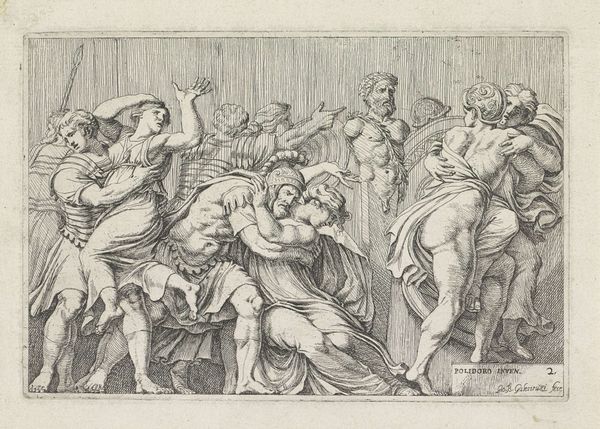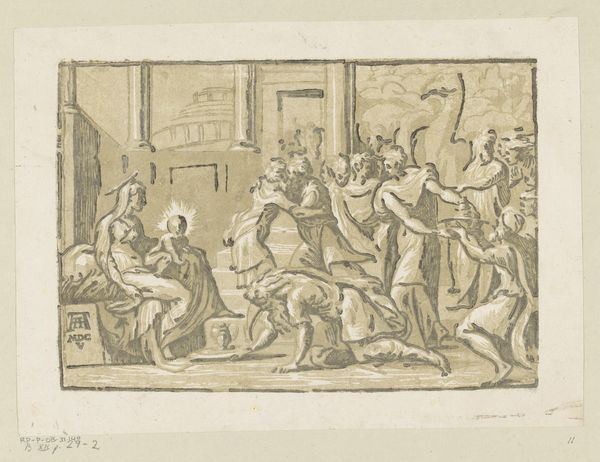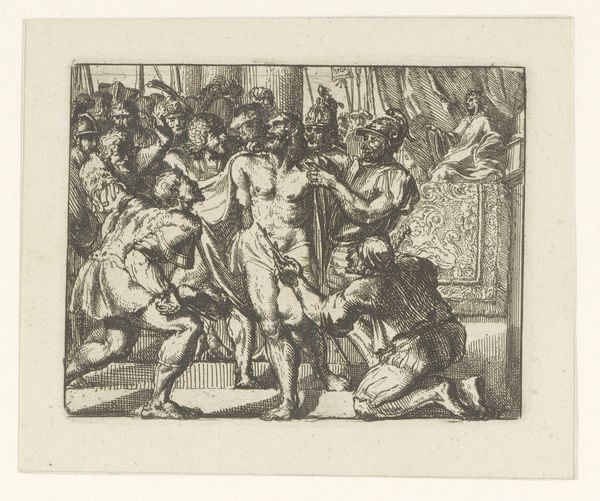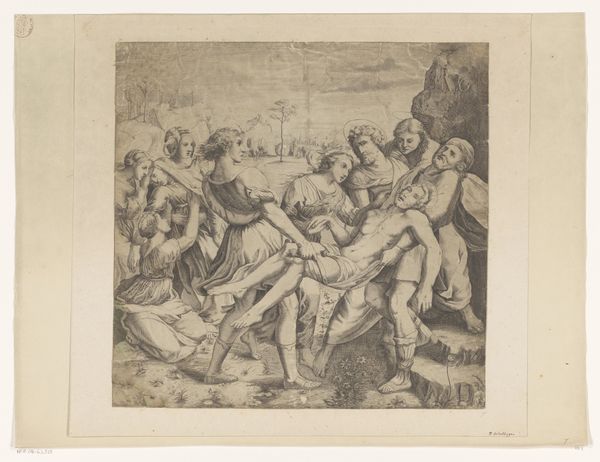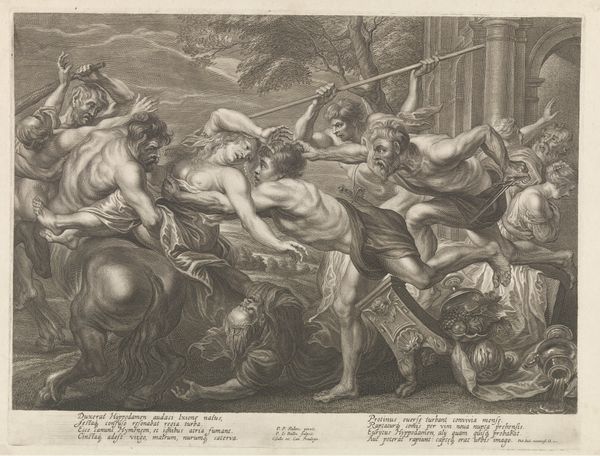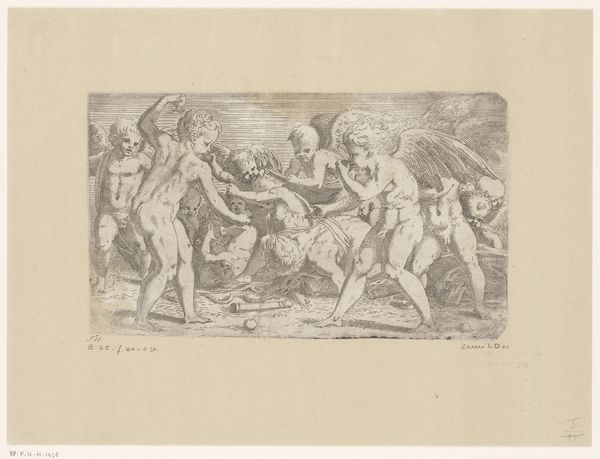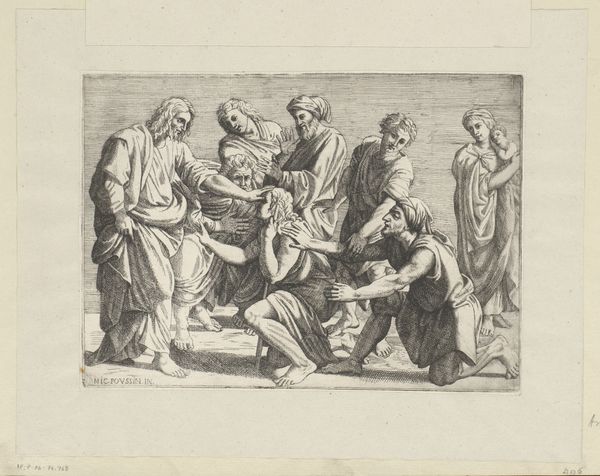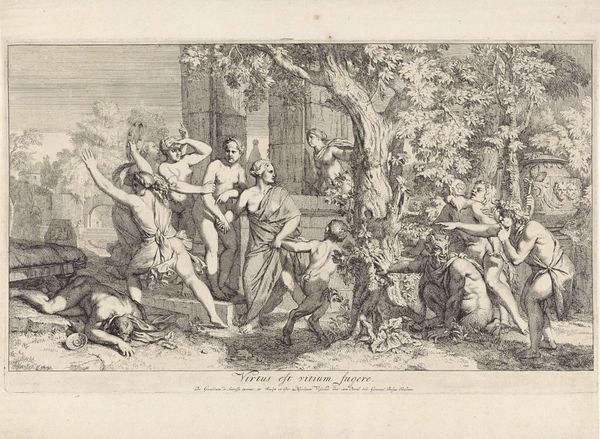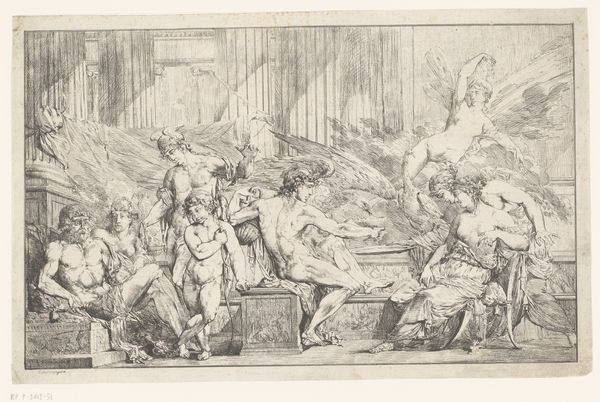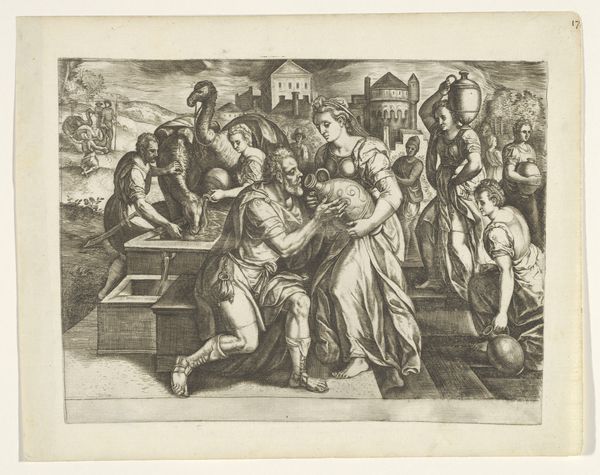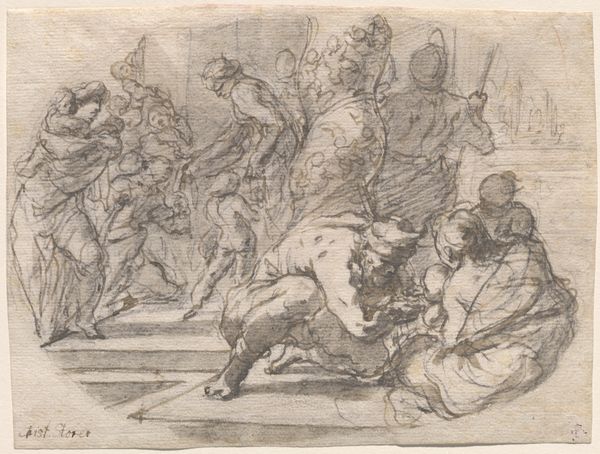
print, engraving
# print
#
pen illustration
#
pencil sketch
#
old engraving style
#
classical-realism
#
figuration
#
line
#
history-painting
#
engraving
Dimensions: height 117 mm, width 173 mm
Copyright: Rijks Museum: Open Domain
Curator: Oh, wow, this engraving… It’s like looking into a fray, a tangle of limbs and desperation caught in ink. A little chaotic, if I’m being honest. Editor: This intriguing piece is called “Mythologisch-historische scene,” made sometime between 1765 and 1799 by Jean Matthias Royer. It’s an engraving, so it would have been produced as a print. Curator: Historical, mythological… It’s got that dramatic, operatic feel. All that hyper-masculine grappling, the swooning, passive figures…I see a struggle for power depicted here, certainly along gendered lines. What myth do you suppose it might illustrate? Editor: Considering the period, it's likely inspired by classical narratives, where themes of war, abduction, and heroic struggles were often allegorized. I’d say we have some men taking some… enthusiastic liberties with those women back there. You notice how those background statues seem to function as silent, stone witnesses? And the architecture almost fades, like the figures are on center stage. It raises questions about power dynamics. What’s acceptable on the world stage, and what gets memorialized as heroism? Curator: Exactly! It reeks of a kind of sanctioned violence, doesn't it? And how does the medium influence the message? The fine lines of the engraving—so precise, so permanent—give a disturbing sense of authority to what is, essentially, a depiction of brutality. Editor: Perhaps this piece reflects the societal values and imperialist mindset prevalent during the artist’s time? The figures are idealized, even though their actions… well, they certainly wouldn't pass today's ethical standards. I mean, this historical context serves as a lens for understanding the moral ambiguities inherent in depicting such a scene, no? Curator: Precisely! Looking at this work today encourages us to challenge such glorifications. What narratives are we inheriting? How do they affect what and who we celebrate in contemporary society? Editor: It's definitely food for thought – err, sight for thought! It can feel difficult to look back, but so important too.
Comments
No comments
Be the first to comment and join the conversation on the ultimate creative platform.
